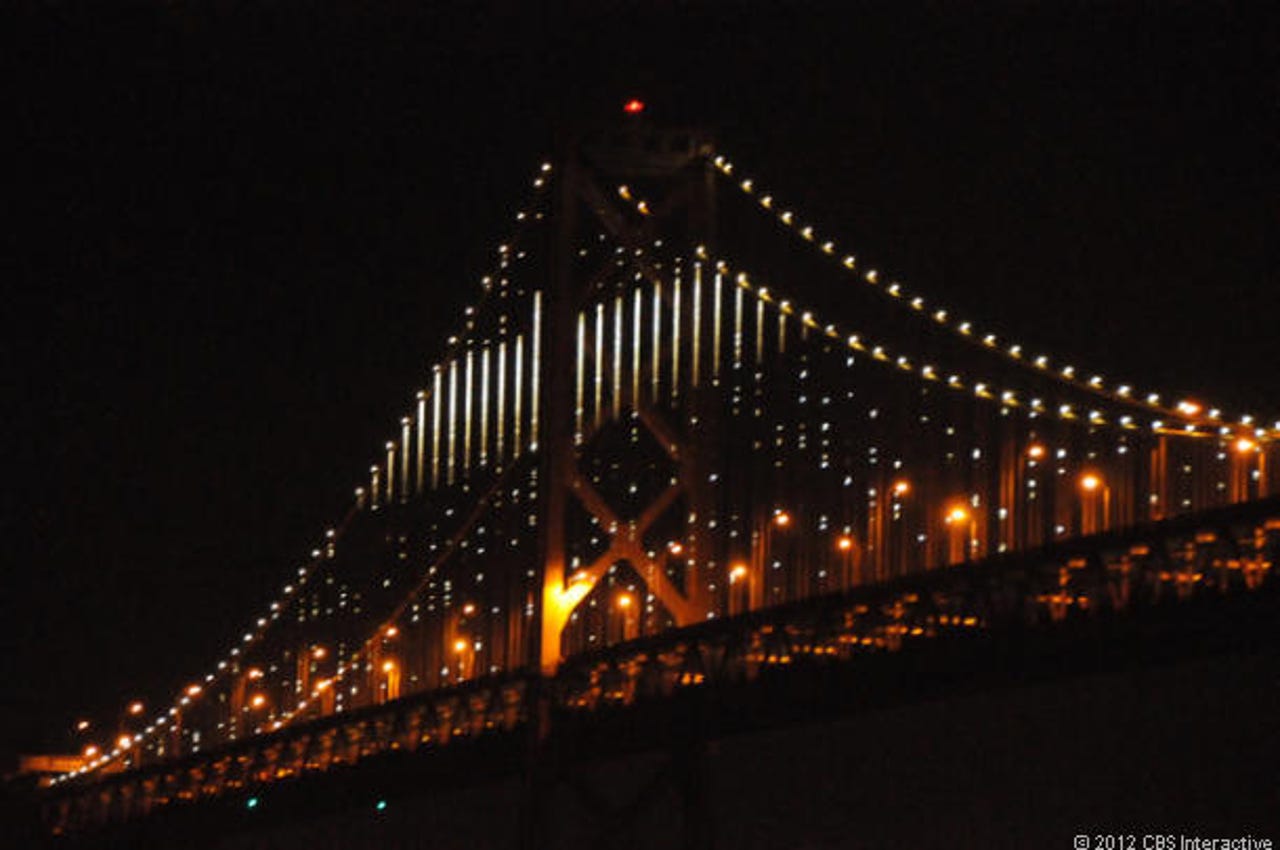Aspen Ideas Festival: How tech, art intersect on the San Francisco Bay Bridge


More from the 2013 Aspen Ideas Festival:
ASPEN, COLO. -- Earlier this year, part of the San Francisco Bay Bridge started to light up the night sky with the help of 25,000 computer-controlled LEDs in what has been described as "the most remarkable public art project" in the United States.
Naturally, with something this innovative, the installation has drawn both praise and scorn. Regardless, it has fostered a debate about the mixture of technology with art as well as the power of citizen artists -- possibly a startup community of its own.
Leo Villareal, the New York City-based artist behind the Bay Bridge lights, outlined some of his previous projects from coast to coast during the 2013 Aspen Ideas Festival on Saturday evening.
"Art can be stripped down to almost the bare minimum," posited Villareal, "It's about experimenting with space and see how you can make the sky come down."
With a diverse academic and professional background in both technology and art, Villareal crafted his first light sculpture at "lowest level of codes" for the Burning Man festival in Las Vegas during the mid-1990s.
Villareal said he spends a lot of time developing his own software (i.e. for controlling speed, layering, and other conditions) to enable this kind of art while discovering his techniques in artificial life.
Another example is a hexagonal lighting grid installed on the ceiling of the Bleecker Street subway station in New York, which is the first of its kind that the MTA has invested in, according to Villareal.
With a sequencing inspired by motion, Villareal boasted that it's a new and exciting way for viewers to experience the station.
"People who would see me controlling the bridge with my laptop would freak out," Villareal joked.
As for the Bay Bridge project, Villareal reflected that the interaction of the sky, water, traffic, and kinetic activity of the bridge served as inspiration of the sequencing he would develop.
Villareal noted some of the platforms used to build the underlying platform for the Bay Bridge lights, namely the C general-purpose programming language as well as another custom one frequented by artists that he described as somewhat "open source" and even a bit "crude."
"For me, it's not about technology. It's just a tool," Villareal admitted. "It's about integrating these things into artwork."
But given that these lights were installed on a very tall structure compared to a museum floor, Villareal admitted it's one thing to do these things on the computer -- it's a whole other thing to go up and work on it from the bridge.
"No, I didn't freak out," Villareal laughed, joking slightly that there were professionals to talk him down should anything go awry.
Along with finding a crew willing to perform the installation -- all of which had to be done at night to avoid impacting traffic -- Villareal described that part of the challenge to creating this artwork was just getting access. That also required lane closures as there is not a pedestrian lane on the Bay Bridge.
"For me, it's not about technology. It's just a tool," Villareal admitted. "It's about integrating these things into artwork."
Obviously, there isn't much privacy when trying to develop art in a very public space either.
Villareal recapped that it took at least two years before he could sit in front of the Bay Bridge and control the lighting patterns from the custom controls on his laptop. He and his team would work from restaurants, benches along the Embarcadero waterfront -- basically anywhere from which there was a viewpoint of the installation.
"People who would see me controlling the bridge with my laptop would freak out," Villareal joked.
It's estimated that up to 50 million people will see the Bay Bridge lights project while it is live for the next two years.
"It's possible for almost anyone to engage with this," Villareal predicted, describing it as a "remarkable moment for public art."
He concluded, "I see this as a template for other projects."
When asked if there was any chance that the $8 million privately-funded project would become a permanent fixture in the Bay Area, Villarreal replied that was designed as a temporary installation.
Villareal admitted that there are "other issues" that need to be addressed, although he only specified maintenance as one example.
But he didn't say no either.
More about the San Francisco Bay Bridge project:
- On CNET: Light it up: Epic LED show to wrap SF Bay Bridge in swirls and stars
- On SmartPlanet: 25,000 LED light display heading to San Francisco in March
Image via CNET